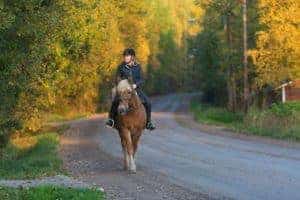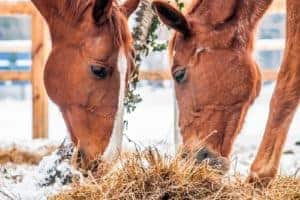
Weed Management Plans for Horse Pastures
Fall is a good time to evaluate the quality of your horse pastures, because it is easy to see which weeds were most prevalent and uncontrolled during the summer and are now large and seed-producing.

Fall is a good time to evaluate the quality of your horse pastures, because it is easy to see which weeds were most prevalent and uncontrolled during the summer and are now large and seed-producing.

Most cool-season horse pastures should be fertilized with nitrogen in the fall to boost root reserves and extend the grazing season.

A horse’s papers were lost during Hurricane Harvey. His new owner wants to know if DNA testing can help discover his breeding.

University of Kentucky researchers developed a survey distributed earlier in 2019. Here’s what they found.

Racing breeder Stonestreet Farm has announced the development of a blood sampling, testing, and secure storage protocol in partnership with the University of Kentucky. The program was developed in response to reports of off-label bisphosphonate use in growing horses.

While it might seem like a tricky task, riders can teach their bodies how to react when they part ways with their horses to minimize injury risk.

The idea for a CoP stems from research by Karin Pekarchik, who conducted a survey in the spring of 2017 on female equestrian breast discomfort/pain and other health issues.

Ensure horses and livestock have adequate shelter, water, dry bedding, and feed to make it through the cold spell.

Completely re-establishing pastures might sound daunting, but can result in healthier grass and more forage for horses.

If your cool-season grass pastures are green during the fall, chances are they’re healthy and productive.

Researcher Karin Pekarchik shares what she learned from a study on bra use and health outcomes in female equestrians.

About 30% of Fell Ponies and 18% of Dales Ponies are mutation carriers. The syndrome is also found in Gypsy Horses.

The center opened June 5, 1987, to fulfill Thoroughbred breeder Maxwell Gluck’s legacy and promote equine research.

A fall nitrogen application is a simple and relatively inexpensive step that can positively impact your pastures.

Cool-season pastures grow rapidly in the spring and fall, and management techniques must change with the seasons.

A combination of cold air and winds create dangerous conditions. Here’s how to protect your horses and other animals.
Stay on top of the most recent Horse Health news with